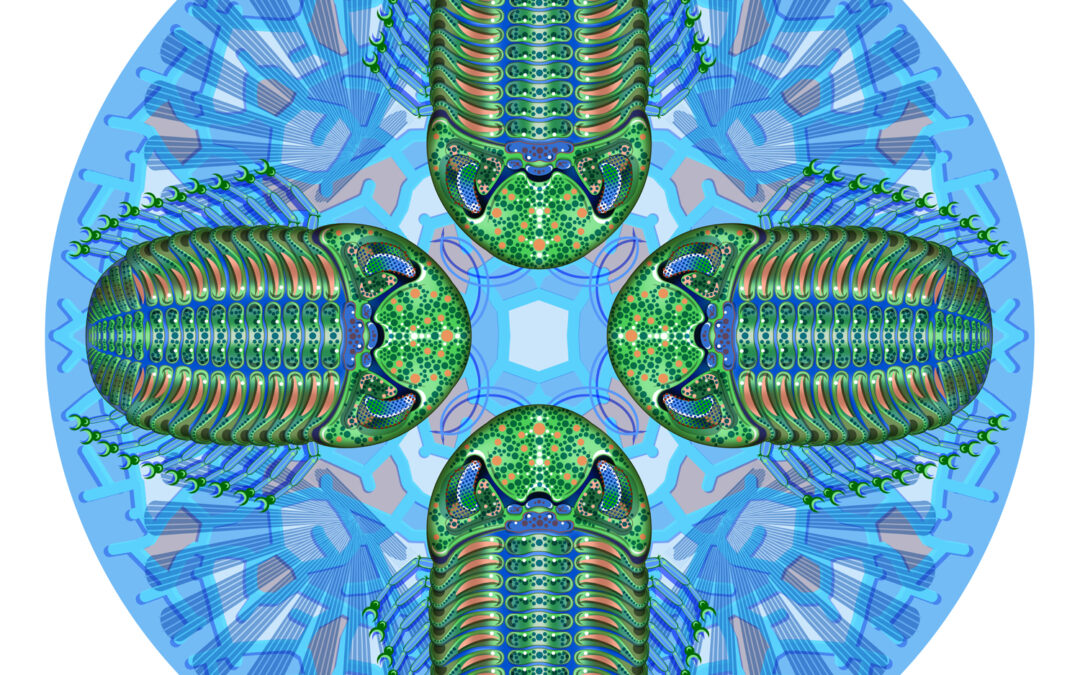Solitary activities have always been a part of my life. Since childhood, art pursuits of drawing and painting, flame painting tiny diecast cars for the past 30 years, and fossil hunting and cataloging my finds as a teenager certainly all count. What really filled the bill was the thrill of scrambling up and down limestone cliffs and combing through rockslides to uncover what had existed 450 million years ago during the Ordovician Period in Richmond, Indiana. On weekly trips, well-preserved casts of cephalopod and trilobite molted shells were my solitary treat. I have been teased about my love for invertebrates for many years. Perhaps I am not a people person—lol!
My fossil high school hunting hobby was rewarded with a field trip to the Medusa shale quarries silica formations in Sylvania Ohio for my search for the Devonian Period frog like trilobite Phacops rana. I found a few poor examples of this species’ cephalon or head and pygidium or tail segment but I had hoped for more complete specimens including those that are found enrolled like present day pill bugs. Combined in this trip was visiting the natural history museum in Ann Arbor at the University of Michigan where full glistening black specimens were on display. My eyes bugged out just like the trilobites I speak of.
The Middle Devonian period approximately 400 millions years ago saw a great expansion of aquatic and land creatures. The fauna in the expanse of undersea mudflats was a home to a diverse population of reef inhabitants including spirifer brachiopods, primitive ostracods, branching bryozoans, compound corals, and “sea flower” crinoids. The common trilobite resident I was looking for, Phacops rana, was a filter feeding “mud-ingester,” in competition for food to eat and be eaten by a variety of plate-skinned fish, placoderms, lobe-finned fish, crossopterygians, primitive sharks, first examples of bony fish, osteichthyes, and, ravenous squid-like long shelled cephalopods. This was a crowded habitat indeed that called for protective strategies and adaptive characteristics such as large eyes perched high on their heads and the ability at a moment’s notice to roll up into a protective hard shell ball if it sensed danger nearby.
Many trilobites had a pair large compound eyes riddled in a checkerboard pattern of hundreds of calcite hexagonal lenses known as holochroal eyes. Species of Phacops and other similar genera had larger schizochroal eyes with fewer collections of round lenses placed high on their heads that faced in all directions providing a semi circular almost 360 degree view of their undersea habitat to find prey and to elude predators.
Another adaptive feature was this trilobite’s ability to roll up its multi-segmented and flexible hard exoskeleton body into a tightly bound ball just as present day pill bugs do to protect its delicate legs and soft gill structures underneath. Phacops rana was also tolerant of ever changing conditions of water level, temperature, salinity, turbulence, availability of food, invading predators, food competition, and a constant influx of mud based on the composition of the many stratified layers of shale and limestone in which its fossils are found worldwide.
If you like trilobites, then trundle into my shop for this print and many other artful and imaginative images of nature’s wonders. Wander with wonder in the present and in the past; nature’s lessons abound! I hope you will “Dig” my art and tell others about it. I appreciate your support.

